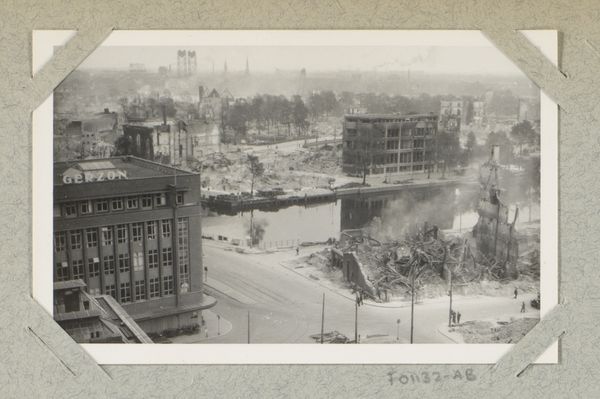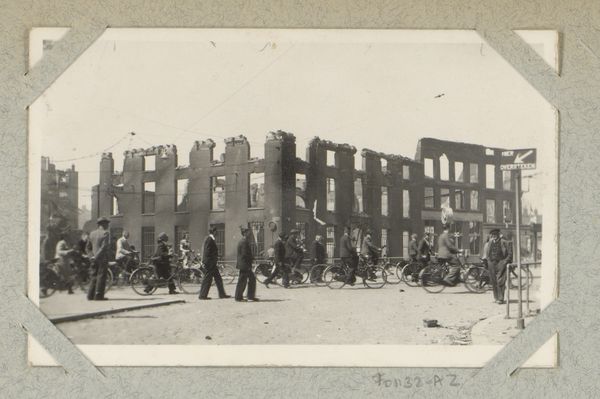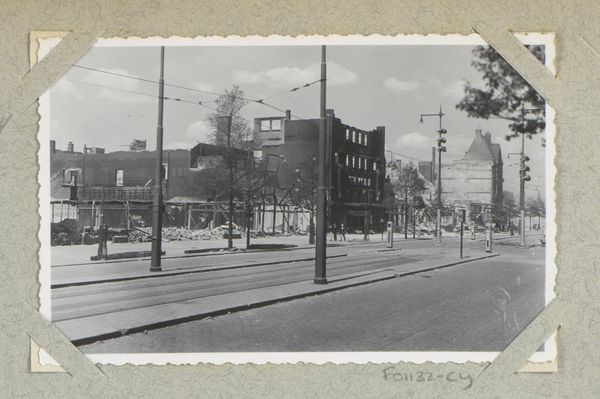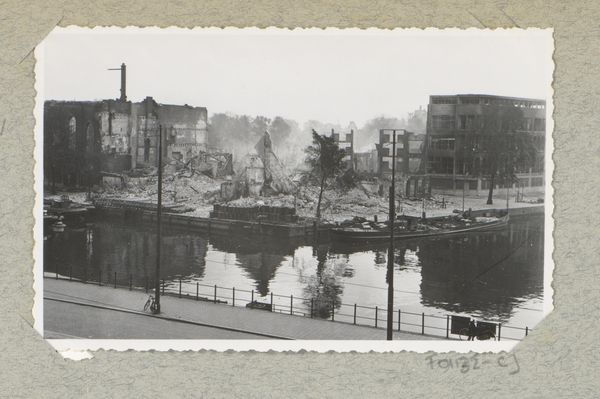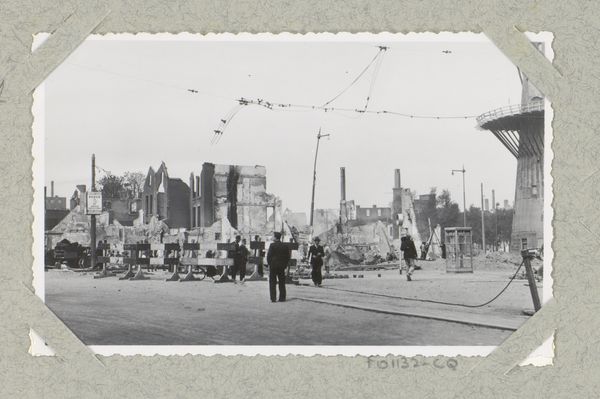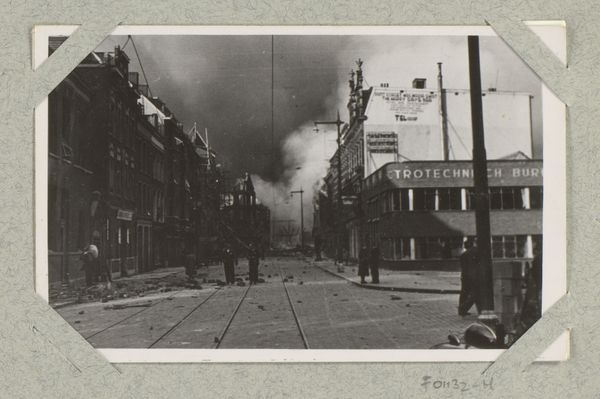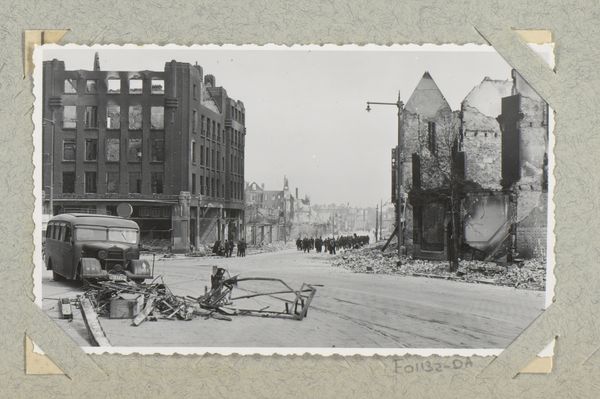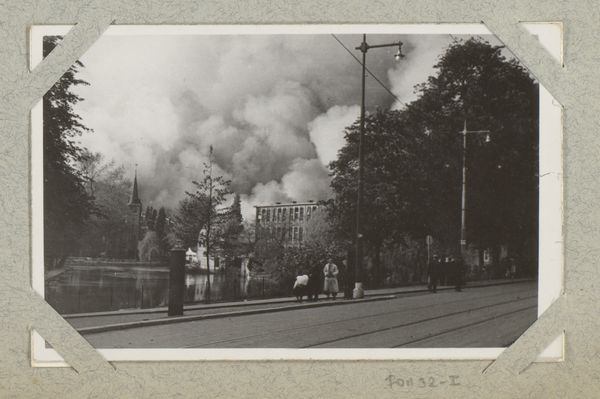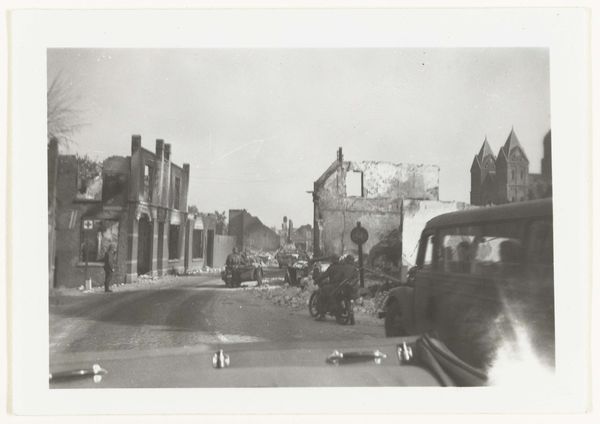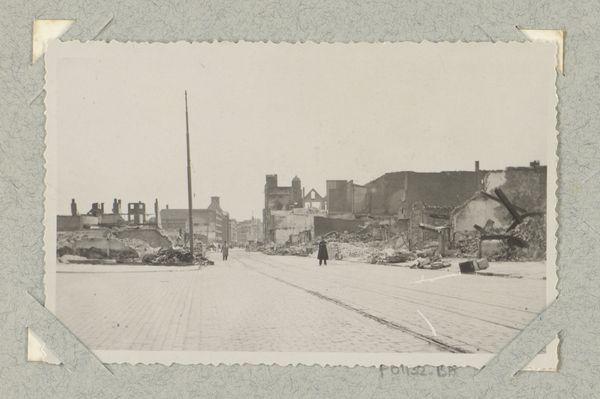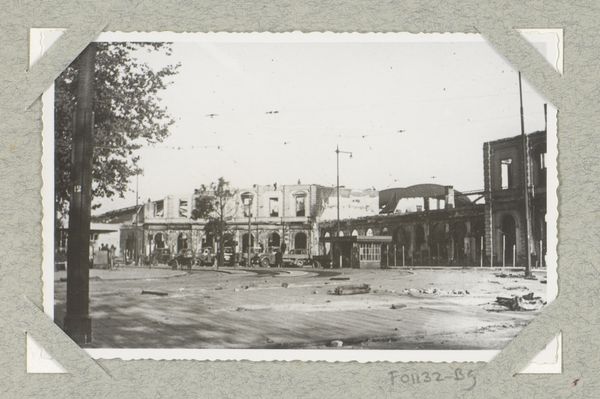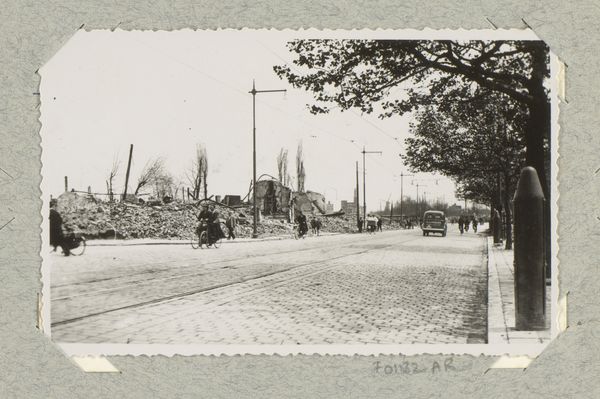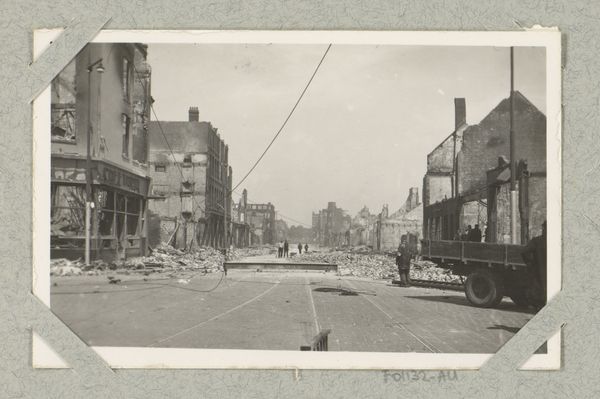
photography
#
landscape
#
street-photography
#
photography
#
cityscape
#
history-painting
Dimensions: height 88 mm, width 136 mm
Copyright: Rijks Museum: Open Domain
Editor: This photograph by J. Nolte, simply titled "Personen bij ruïnes aan de Coolsingel te Rotterdam," dated circa 1940-1945, is stark. The devastation of the city is immense, yet people are walking amongst the rubble. What do you see when you look at this photograph? Curator: It's a powerful visual document, isn’t it? Considering its historical context, this photograph offers a glimpse into the lived experience of Rotterdam citizens immediately after the bombing. The framing centers the resilience of human figures amongst ruins of institutions that represent Dutch history and society. Editor: It's hard to imagine what it must have been like to return to this. Curator: Precisely. This image isn't just about physical destruction; it shows the ruins of cultural memory. Consider how photography itself played a role. Beyond documenting what happened, photographs like this helped to shape public memory, circulating nationally and internationally as evidence of the costs of war, also becoming symbols of a collective trauma. Who are these figures for? Editor: The image makes me think about trauma and documentation, and the public and private faces of rebuilding after a catastrophic loss. The act of photography seems critical. Curator: Exactly. Nolte captured this urban landscape precisely, with careful composition, perhaps attempting to restore the city in the visual. The people, small in scale relative to the buildings, tell stories about survival, returning, and potentially, the very first steps of reconstructing not just the city, but society. What ethical responsibility do you think Nolte bears when capturing such scene? Editor: That’s a point I hadn't considered. I can now see this image not only as historical documentation but as a carefully constructed narrative of resilience amidst ruins. The photograph becomes a testament of rebuilding. Thank you. Curator: It has also helped me recognize Nolte's ethical awareness of a tragic scene; considering not just loss and resilience, but accountability too.
Comments
No comments
Be the first to comment and join the conversation on the ultimate creative platform.
